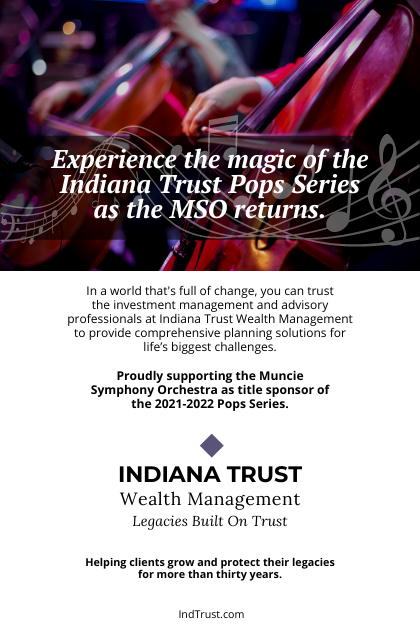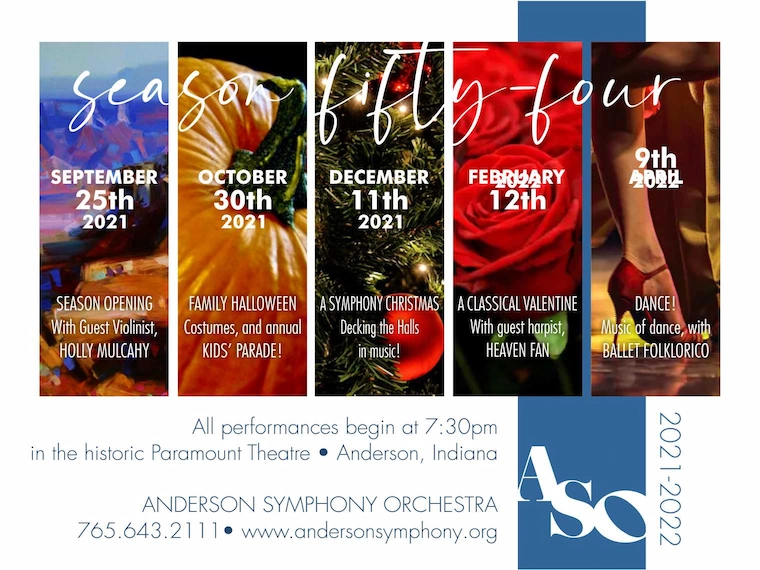
A New World
Matthew Kraemer, conductor
Rubén Rengel, violin
ARTIST is represented by The Sphinx Organization
Festive Overture — William Grant Still
Variations on a Shaker Melody — Aaron Copland
Violin Concerto, Op. 14 — Samuel Barber
I. Allegro
II. Andante
III. Presto in moto perpetuo
Rubén Rengel, violin
Intermission
Symphony No. 9 in E Minor, "From the New World," Op. 95 — Antonín Dvořák
I. Adagio - Allegro molto
II. Largo
III. Scherzo: Molto vivace - Poco sostenuto
IV. Finale: Allegro con fuoco
William Grant Still (1895-1978), “Festive Overture”
Called the “Dean” of Afro-American composers, William Grant Still was born in Mississippi and grew up in Arkansas. After serving in the Navy during World War I, he moved to the Harlem neighborhood of New York City. There, he pursued a career as an arranger and composer. As a black composer, he faced an uphill battle to succeed in a field dominated by white men. His ultimate success as a composer was part of the Harlem Renaissance, a flowering of African American culture in the years 1917-1935. Perhaps Still’s best-known work is his “Afro-American” Symphony. When the Rochester Philharmonic performed the symphony in 1931, it was the first time that a top-tier orchestra had played a work by an African American composer. Still’s music fell into obscurity after his death but has gradually been revived in recent decades. His “Festive Overture,” performed this evening, was the winner of a nationwide competition held by the Cincinnati Symphony Orchestra in 1944 to celebrate the orchestra’s 50th anniversary. The CSO premiered “Festive Overture” shortly after the competition, and it was well received. While shorter than his “Afro-American” Symphony, the “Festive Overture” has much of the same rhythmic drive and makes impressive use of the brass and percussion sections.
© James Thompson, 2022
Aaron Copland (1900-1990), “Variations on a Shaker Melody” from Appalachian Spring
Born in New York City to Russian-Jewish immigrants, Aaron Copland developed a distinctively American musical style which drew from folklore and often evoked great scenic landscapes in the United States. “Variations on a Shaker Melody” is an excerpt from Appalachian Spring, a Pulitzer Prize winning ballet composed by Copland from 1943 to 1944. The ballet draws on folk music from the Appalachian Mountains in Pennsylvania and tells a story about early American pioneers and springtime. The music from the ballet was so popular that Copland later turned it into a concert piece. “Variations on a Shaker Melody” is the seventh out of the ballet’s eight sections and is based on repetitions and variations of the famous “Simple Gifts” melody. “Simple Gifts,” composed by Elder Joseph Brackett in 1848, was relatively unknown when Copland selected it for these variations. The words of the song, such as “’Tis the gift to be simple, ‘tis the gift to be free…” reflected the ballet’s themes of peace and war, and resonated powerfully with American audiences while the threat of World War II still loomed large.
© James Thompson, 2022
Samuel Barber (1910-1981), Violin Concerto
Thanks to his lyrical and accessible musical style, Samuel Barber remains among the most frequently performed American composers. While Barber is surely best remembered for his somber Adagio for Strings, the Violin Concerto is a treasure of the repertoire. In 1939, a business tycoon named Samuel Fels commissioned Barber to write this violin concerto and dedicate it to Fels’s adopted son, Iso Briselli. Apparently Briselli was unimpressed with what Barber produced, initially complaining that the piece was too easy. The composer responded by adding a virtuosic third movement. Briselli again complained – now the concerto was not cohesive! Barber must have borne these criticisms well, making further revisions to the concerto until it could finally be premiered in 1941. The Philadelphia Orchestra gave the premiere with Eugene Ormandy conducting and Albert Spalding as violin soloist. The work is divided into three movements. The first movement is enchanting, with long, romantic melodies climbing and falling. In the slow second movement, the oboe shines with a lengthy solo that opens what becomes an intensely emotional movement. The third movement takes off at breakneck speed and leaves behind the sentimentality of the previous movements in favor of relentless syncopations and crunchy harmonies. Altogether, the concerto showcases all of a violin soloist’s expressive and technical capabilities.
© James Thompson, 2022
Antonin Dvorak (1841-1904), Symphony No. 9 in E Minor, “From the New World”
Dvorak was a leading Czech composer of the Romantic era. The “New World” Symphony was premiered by the New York Philharmonic in December 1893 and has subsequently become Dvorak’s most famous work. It was composed during a span of several years in which he lived in New York and held a lucrative position as the director of the newly founded National Conservatory. He traveled during summer months, visiting the immigrant Czech community of Spillville, Iowa, and hearing American folk songs and African American spirituals. The degree to which the American music he heard influenced his “New World” Symphony has been much debated. At its heart, the symphony stays true to Dvorak’s Czech heritage and style of composition. Nevertheless, Dvorak composed melodies that reflected the character of folk songs he encountered in America.
The first movement opens with a slow, mournful melody that passes from cello to woodwinds, punctuated by suspenseful pauses, horn calls, and pounding timpani. The tension of the introduction escalates and then a fast tempo takes over. Throughout the rest of the movement, melodies jump from one instrument to another, frequently interrupted by bold, full orchestral moments. Several flute solos use the pentatonic scale, reminiscent of Native American melodies. After opening with dark brass chords, the second movement gives way to an exquisite English horn solo over a lush bed of strings. This melody captures the longing and simplicity of an African American spiritual. The third movement is a dazzling, sparkling scherzo which is reminiscent of the second movement of Beethoven’s Ninth Symphony. The final movement is a tour-de-force that begins with a menacing Jaws-like opening before churning out a number of new themes. Dvorak cleverly ties together the seemingly unrelated movements of this symphony by referencing previous movements. Quotes from the first movement appear in both the second and third movements, and the coda of the final movement combines themes from all four movements to form one epic conclusion.
© James Thompson, 2020












